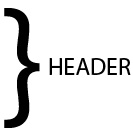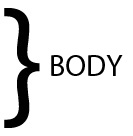How to write a Confirmation Letter
How to write a Confirmation Letter
Writing a confirmation letter is a short effort, mainly because it is not supposed to be a long one. Being a part of formal letters, these letters have a formal structure. All you need to do is - Create the content as per the requirement. Upon familiarising yourself with the format, template and examples of this type of letter, your letter writing effort will be shortened even more. Plus the Confirmation Letter tips also ease your effort to a great extent.
Confirmation Letter Writing Tips
- Collect Accurate Information – Confirmation letter confirms the facts and before you do that you have to collect the accurate information. Your interpretation of the information could be accurate to you but may not correspond to the original one. Do you have the correct addressee? Have you verified them? Confirm the recipient. Some officials may not need to be sent the letter at all, some may require more than one letter and some may be unresponsive. All these and more need to be checked before you start your letter. So create a list and check its relevancy and inclusion.
- Confirmation of the Information – The core of the confirmation letter is the information it contains. This information needs to be checked and confirmed before it is sent. The letter may contain details of the arrangement like dates, times, location. You should consult your seniors, respective head or any experienced member to confirm the information. Check for the original documents, refer to the conversations, clarify or amend the terms of agreement, repeat the details of the agreement, whether a confirmation is necessary and or any other information which needs to be clarified.
- Factual and Accurate – Business decisions depend on the confirmation letter. And if they have certain comments, emotional pour-outs, speculations, intimidation or any irrelevant matter, it will fall short of what a confirmation letter stands for. Thus, the letter should be factual and accurate. As a rule, do not use exclamation points. You letter should address only the relevant, i.e. dates, times, amount, administrative details, respective in-charge and any other required. You need to do this not only because it is the appropriate thing but also because the letter may be recalled in case of any legality. And in such a circumstance, your work may speak against you.
- Be Professional – Not everyone will be experienced enough to write letter of confirmation. You may have the literary skill but is it applicable to business or matters which require professionalism? Even if you have the training, a confirmation letter may require certain prerequisites depending upon the client and work ethics of the office. For a solution to this you can seek help from an expert in your office. However, professionalism in a letter can be initiated by being simple in order to be easily comprehended. Use professional fonts and maintain them throughout the letter. Use proper salutations and complimentary gestures. Be polite and assure the reader that their correspondence has been taken seriously. Appreciate the reader towards the effort taken towards the letter.
- Short and Brief – A confirmation letter is mostly short and brief. It is a piece of information devoid of any emotions. It requires only that information which is relevant to the matter. For example if the confirmation letter deals with salary confirmation of an employee, it will just have details like employee's name, salary figure, date of appointment and other necessary information.
- Letterhead – With regard to formal letters, use letterhead or a formal presentation of your name and address in your confirmation letter. A pre-printed label with the same information can also be used. If the matter is personal there is no need to have a letterhead and you can non-confirm the other formalities to personalise the letter.
- Update and Resolve – Always make a point to send any required updates put into effect by the organisation. If you have missed out something, reiterate your letter with updated information and clarification. It is better to rectify your mistake than to ignore it as you may lose your job. Provide extra information as per se.
- Maintain the Tone – Confirmation letters have a formal tone as seen in business letters. By maintenance of tone, it is implied that you should utilise the same tone as applied in any earlier correspondence. The tone of the letter is also dependent on the relationship between the corresponding parties. There can be certain amount of informality (but not casual) to these but only under certain conditions. This condition applies when the recipient and the sender are well acquainted or if the letters is confirming a previous agreement.
- Extend your Support – It is an established practice to offer your contact information. This is done by including a small note at the conclusion of the letter. This enables an effective communication as the recipient may need to contact you whenever there is difficulty in understanding.
- Express Gratitude – Never shy from expressing your gratitude, it is a required essential of any formal letter. Thank the recipient for the required; for agreeing to participate, for providing the information or any matter which requires the formality.
- Enthusiastic Approach – Not all confirmation letters will conform to this suggestion. Letters where you are invited as a guest, a speaker, a volunteer or given any opportunity to honour an event or only appear in it will conform to this suggestion. Show your happiness with words like ‘It will be amazing’, ‘I am eagerly awaiting’, ‘It is always a pleasure to be a part’ etc.
- Proofread the Confirmation – A typical formality of all the letters, proofreading is even more important here. This is evident because of the seriousness of the information. A minor error can become a major issue. Ensure the accuracy of your facts by double checking them. Have you spelled the recipients’ name and address correctly? Have you used appropriate language and grammar? It is not necessary that you use academic level words, keep them simple. Avoid using words like ‘Just’ and ‘Really’. Don’t overuse certain words. Read the matter after an hour or two, this way you will find more mistakes. You can read the letter next day towards this effect, if it is suitable. Enlarge the viewing area of the text to sort out your mistakes. You can get help from someone experience or your colleague to proofread the letter.
- Respond in Time – Timely response is not only a professional ethic but a highly relevant one. Respond within a few days of the original correspondence or as per the need. While doing so inform all the concerned so that everyone is up to date on current happenings.
- Keep a Copy – Always keep a copy of the signed letter. It has two benefits – There is a record of the letter which can be useful in writing a further communication or for reference purposes. Secondly, you have a proof that you delivered the letter, in case someone complains about you. The recipient can deny receiving the letter, to counter this, send the letter via certified mail. If you are emailing then use the ‘Send Receipt’ option of your email service. Also use the option of ‘Saving the Sent Mails in the Sent Mail Option’. The outlook also has this option, if you are using it.
Confirmation Letter Formats
Confirmation Letter Format 1 - Meeting
|
Organisation Letter Head Date
Reference or Subject (as required) Dear Recipient (Salutation) First Paragraph – Relevant confirmation points date, time, place etc. Second Paragraph – Clarifying the objective, confirming receipt etc. Third Paragraph – Further assistive information
Subscription – Thanking you, yours sincerely etc. Your Signature Your Typed First Name Last Name Your Designation ENCL: (optional) stands for ‘Enclosure’ i.e. attached documents CC: (as required) stands for Carbon Copy, i.e. same copy to many |
Confirmation Letter Format 2 (Account Balance)
|
Your Name
Date Recipient's Address (can be positioned left, right or centre)
Reference or Subject (as required) Dear Recipient (Salutation) First Paragraph – Information regarding the type of confirmation your require Second Paragraph – Details in a chronological order regrading the reason for confirmation Third Paragraph – Request for an early action
Subscription – Thanking you, yours sincerely etc. Your Signature Your Name ENCL: (optional) stands for ‘Enclosure’ i.e. attached documents CC: (as required) stands for Carbon Copy, i.e. same copy to many |



